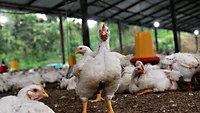Nanoplastics Could Make Foodborne Pathogens Like E. coli More Virulent, Study Shows

Image credit: rawpixel.com via Freepik
New research from food scientists at the University of Illinois Urbana-Champaign suggests that certain nanoplastics may make foodborne pathogens more virulent.
The findings are presented in the article “Nanoplastics-mediated physiologic and genomic responses in pathogenic Escherichia coli O157:H7.”
The senior study author is Pratik Banerjee, associate professor in the Department of Food Science and Human Nutrition at the University of Illinois. The study was published in the Journal of Nanobiotechnology.
“The widespread occurrence of microplastics (MP) and nanoplastics (NP) in the environment is commonly thought to negatively impact living organisms; however, there remains a considerable lack of understanding regarding the actual risks associated with exposure,” the study article notes. “Microorganisms, including pathogenic bacteria, frequently interact with MPs/NPs in various ecosystems, triggering physiological responses that warrant a deeper understanding.”
The study conducted by the University of Illinois team experimentally demonstrated the impact of surface-functionalized differentially charged polystyrene (PS) NPs on the physiology of human pathogenic Escherichia coli O157:H7 and their influence on biofilm formation.
“Our results suggest that charged NPs can influence the growth, viability, virulence, physiological stress response, and biofilm lifestyle of the pathogen,” the study article says.
Positively-charged NPs were found to have a bacteriostatic effect on planktonic cell growth and affect cellular viability and biofilm initiation compared to negatively charged and uncharged NPs. The transcriptomic and gene expression data indicated significant changes in the global gene expression profile of cells exposed to NPs, including the differential expression of genes encoding several metabolic pathways associated with stress response and virulence.
Looking for quick answers on food safety topics?
Try Ask FSM, our new smart AI search tool.
Ask FSM →
“Significant upregulation of Shiga-like toxin (stx1a), quorum sensing, and biofilm initiation genes was observed in NP-exposed biofilm samples. Overall, exposure to NPs did not significantly affect the survival of pathogens but affected their growth and biofilm development pattern, and most importantly, their virulence traits,” the study article notes.
Biofilms often serve as a hotspot for the exchange of genetic material, which may influence their virulence traits and, in turn, may enable pathogens with better survivability, the article notes.
The researchers concluded that “surface-charged NPs induce physiological stress with a potential risk of increased virulence in this pathogen [E. coli O157:H7]. Increased survivability of a pathogen and upregulation of virulence genes upon biofilm formation are major concerns with respect to enteric human pathogens such as E. coli O157:H7. Thus, in a real environment or ecosystem, where biofilm formation on macro/microplastics and interactions with naturally degraded NPs are unavoidable, such interactions may lead to enhanced survival of pathogens with increased virulence traits.”
The entire article “Nanoplastics-mediated physiologic and genomic responses in pathogenic Escherichia coli O157:H7” can be found here.
In related news, Food Safety Magazine recently reported on a study by Boston University researchers indicating that microplastics could be contributing to increased antimicrobial resistance (AMR) and multi-drug resistance in foodborne pathogens like E. coli. That article can be found here.









